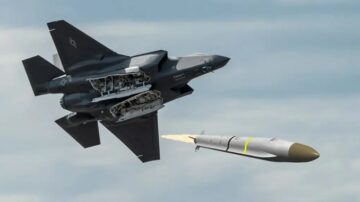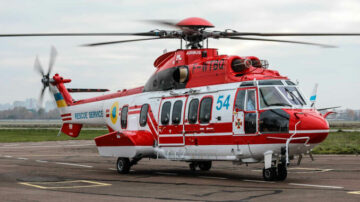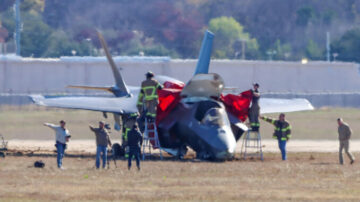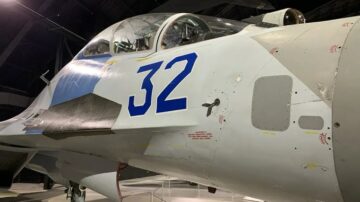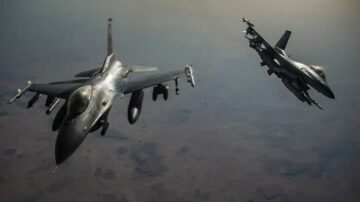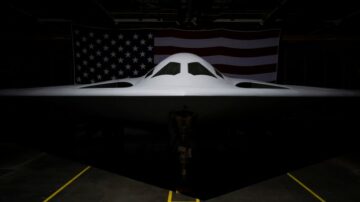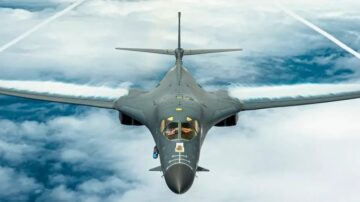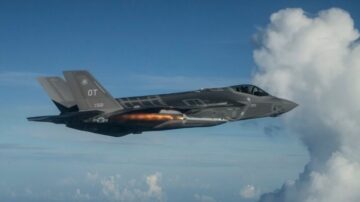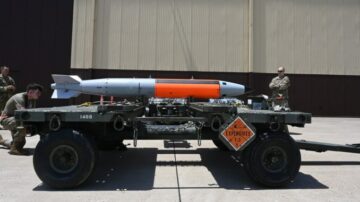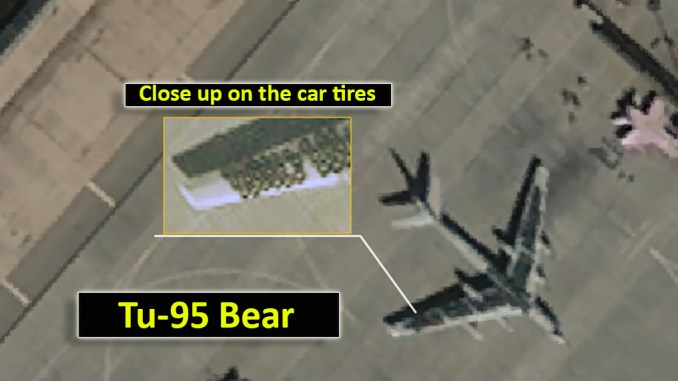
Satellite images show that Tu-95 Bear bombers at Engels-2 Air Base have their wings covered with car tires.
Something interesting is emerging from the analysis of satellite imagery of Engels-2 airbase, located in Saratov Oblast, some 400 km southeast of Moscow and roughly 700 km from the border with Ukraine: at least one Tu-95 Bear strategic bomber appears to have its wings and a small section of the upper fuselage covered with car tires.
This doesn’t seem to be just a single occurrence. In this satellite imagery, it seems the russians are still in the process of fitting tires onto the bomber – a fresh, budget-friendly version of ERA substitute for the russian air force? pic.twitter.com/WUyTFfWlw1
— Tatarigami_UA (@Tatarigami_UA) September 3, 2023
While the reason for covering the wings and part of the upper fuselage in this way is not completely clear, the most likely theory is that the car tires are used to protect the valuable bombers from attacks carried out with kamikaze drones. Someone said the rubber tires would be able to absorb the impact of the remotely piloted vehicle preventing it from exploding upon contact (small/light drones would bounce on the tires and explode at a certain distance from the intended target). Others suggested the car tires would protect the fuel tanks in the wings from shrapnels of a drone explosion.
Whatever, the use of car tires on the wings of the Bear bomber appears to be an improvised anti-drone type of defense, introduced in the wake of a recent Ukrainian drone attack on Kresty Air Base in Pskov Oblast, Russia that destroyed two Il-76 Candid cargo jets and damaged two others, to protect the local bombers. Still, its effectiveness depends on several different factors: the tires have holes and the drones could still be able to reach the upper surface of the wing. The drone could be guided to detonate below the surface of the wing and still cause the total loss of the aircraft.
Last but not least, tires are flammable although they need a high temperature to burn. However, when you store plenty of tires in the same place and conditions for combustion are present, they can become a hazard. When tires catch fire, they burn with intense heat and produce noxious smoke.
Although its effectiveness is questionable, the emergence of such a creative solution to protect critical assets from air strikes conducted by unmanned aircraft of all types once again proves drones have become some of the most (if not the most) important assets in the war in Ukraine: they are used to carry out reconnaissance and coordinate air strikes and they can also carry out long range attack missions. The smaller Kamizake drones, guided from very close distance (as happened in the attack that damaged an A-50U in Belarus) are very difficult to counter also because they are difficult to identify on radars and for this reason they pose a significant threat to air defense systems, especially when used in swarms (large numbers).
Engels-2
Engels-2 is one of the key Russian airbases and the home of the 121st & 184th Heavy Bomber Aviation Regiments, respectively operating the Russian Aerospace Forces Tu-160M Blackjack and Tu-95M Bear strategic bombers. The airfield has been used to launch many of the Moscow’s air strikes with Kh-101 cruise missiles in the past: at certain times as many as 8 Tu-95s and 4 Tu-160Ms were parked side-by-side at Engel-2.
The base came under attack early in the morning on Dec. 5, 2022, that caused the damage of two Tu-95s. On December 26, there was a repeated attack on the Engels air base, which caused the death of three officers of the Russian Armed Forces.
- SEO Powered Content & PR Distribution. Get Amplified Today.
- PlatoData.Network Vertical Generative Ai. Empower Yourself. Access Here.
- PlatoAiStream. Web3 Intelligence. Knowledge Amplified. Access Here.
- PlatoESG. Automotive / EVs, Carbon, CleanTech, Energy, Environment, Solar, Waste Management. Access Here.
- PlatoHealth. Biotech and Clinical Trials Intelligence. Access Here.
- ChartPrime. Elevate your Trading Game with ChartPrime. Access Here.
- BlockOffsets. Modernizing Environmental Offset Ownership. Access Here.
- Source: https://theaviationist.com/2023/09/03/car-tires-tu-95-bomber/?utm_source=rss&utm_medium=rss&utm_campaign=car-tires-tu-95-bomber
- :has
- :is
- :not
- 1
- 125
- 1996
- 2022
- 26
- 700
- 8
- a
- Able
- Aerospace
- again
- AIR
- Air Force
- aircraft
- All
- also
- Although
- an
- analysis
- and
- ARE
- armed
- article
- AS
- Assets
- At
- attack
- Attacks
- Australia
- avatar
- aviation
- base
- based
- BE
- Bear
- because
- become
- been
- Belarus
- below
- blogs
- Books
- border
- Bounce
- burn
- but
- by
- came
- CAN
- car
- Cargo
- carried
- carry
- Catch
- Cause
- caused
- certain
- clear
- Close
- combat
- completely
- computer
- Computer Engineering
- conditions
- conducted
- contact
- contributed
- coordinate
- could
- Counter
- covered
- covering
- Creative
- Crime
- critical
- cruise
- damage
- David
- Death
- December
- Defense
- depends
- destroyed
- different
- difficult
- distance
- Doesn’t
- drone
- Drones
- Early
- edited
- editor
- effectiveness
- embedded
- emergence
- emerging
- Engineering
- Era
- especially
- Ether (ETH)
- Europe
- explosion
- factors
- famous
- Fire
- fitting
- five
- For
- Force
- Forces
- Former
- founder
- fresh
- from
- Fuel
- graduate
- guided
- happened
- Have
- he
- heavy
- High
- Holes
- Home
- However
- HTTPS
- identify
- if
- image
- images
- Impact
- important
- in
- Including
- industry
- Intelligence
- intended
- interesting
- introduced
- IT
- Italian
- Italy
- ITS
- journalist
- jpg
- just
- Key
- large
- launch
- least
- likely
- local
- located
- loss
- magazines
- major
- many
- Military
- monthly
- more
- morning
- Moscow
- most
- Need
- numbers
- of
- officers
- on
- once
- ONE
- ones
- onto
- operating
- Others
- out
- part
- past
- photo
- pilot
- piloted
- Place
- Planes
- plato
- Plato Data Intelligence
- PlatoData
- Plenty
- pose
- posted
- present
- preventing
- private
- process
- produce
- protect
- proves
- range
- reach
- Read
- reason
- recent
- repeated
- Reported
- rome
- roughly
- rubber
- Russia
- russian
- Russians
- s
- Said
- same
- satellite
- satellite imagery
- Section
- seem
- seems
- several
- show
- Shows
- significant
- since
- single
- small
- Smoke
- solution
- some
- Someone
- southeast
- Still
- store
- Strategic
- Strikes
- such
- Surface
- Syria
- Systems
- Tanks
- Target
- that
- The
- their
- theory
- There.
- they
- this
- threat
- three
- times
- tires
- to
- top
- Total
- two
- type
- types
- u.s.
- Ukraine
- Ukrainian
- under
- upon
- use
- used
- Valuable
- vehicle
- version
- very
- Wake
- war
- War in Ukraine
- was
- Way..
- were
- when
- which
- Wing
- with
- world’s
- worldwide
- would
- written
- you
- zephyrnet



